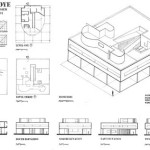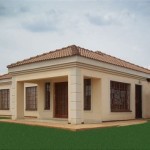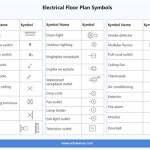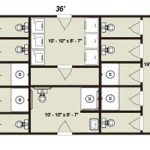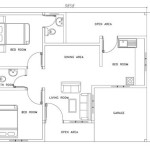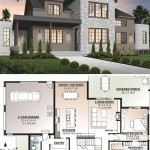The Essentials of Building Plans for One Story Homes
Building a one-story home can be a great way to achieve your dream home. One-story homes are often more affordable to build than multi-story homes, and they can be more accessible for people with mobility issues. However, it's important to carefully consider your needs before you start building a one-story home. Here are some of the essential aspects to consider when creating building plans for one story homes:
Size and Layout
The size and layout of your home will depend on your needs and budget. Consider how many bedrooms and bathrooms you need, as well as the size of the living spaces. You'll also need to decide on the overall layout of the home, including the placement of the kitchen, dining room, living room, and other rooms.
Floor Plan
The floor plan is a detailed drawing that shows the layout of your home. It should include the location of all the rooms, as well as the doors, windows, and other features. The floor plan should be drawn to scale, so that you can accurately visualize the size and layout of the home.
Materials
The materials you use to build your home will have a significant impact on the cost, durability, and appearance of the home. Common materials for one-story homes include wood, brick, and vinyl siding. You'll also need to choose materials for the roof, windows, and doors.
Energy Efficiency
Energy efficiency is an important consideration for any home, but it's especially important for one-story homes. One-story homes have more exposed surface area than multi-story homes, so they can lose heat more easily. To improve energy efficiency, you can use insulation, energy-efficient windows and doors, and a high-efficiency HVAC system.
Accessibility
Accessibility is another important consideration for one-story homes. If you or anyone in your family has mobility issues, you'll want to make sure that the home is accessible. This may include adding ramps, widening doorways, and installing grab bars in the bathroom.
Cost
The cost of building a one-story home will vary depending on the size, layout, materials, and energy efficiency features. It's important to get a realistic estimate of the cost before you start building, so that you can budget accordingly.
By following these tips, you can create a building plan for a one-story home that meets your needs and budget.

Unique One Story House Plans Monster

Must Have One Story Open Floor Plans Blog Eplans Com

Love This Layout With Extra Rooms Single Story Floor Plans One House Pardee Ho Barndominium Blueprints

Small One Story 2 Bedroom Retirement House Plans Houseplans Blog Com
Simple One Story Design Builder

Unique One Story House Plans Monster

40 X 55 2 200 Sf One Story House Plan The Escape

Single Story House Floor Plans Y New

Stylish One Story House Plans Blog Eplans Com

Small One Story 2 Bedroom Retirement House Plans Houseplans Blog Com

